Fake It 'Til You Make It: The Trompe l'Oeil Design of Visitors to Versailles

Maquette by Charles Arquinet (French). Model of the Ambassadors' Staircase, 1958. Wood, cardboard, plaster, plastic; escalier: 41 5/16 x 86 5/8 x 37 13/16 in. (105 x 220 x 96 cm), vestibule: 41 5/16 x 86 5/8 x 37 13/16 in. (105 x 220 x 96 cm). Musée National des Châteaux de Versailles et de Trianon (V.6251-2). © RMN-Grand Palais/Art Resource, NY. Photo by Christophe Fouin
At the palace of Versailles, art and architecture are engaged in creating an overall sense of extreme grandeur and unrivaled opulence. A wide array of rich architectural materials is combined with paintings (on walls and on ceilings) and sculpture to create illusions of depth and expansiveness throughout the palace. French Baroque art and architecture popularized artistic techniques used to generate realistic optical illusions, commonly known by the phrase trompe l'oeil ("trick the eye"). However, there are many earlier examples that date back to Greek and Roman art, including a few from Pompeii here at The Met in gallery 165.
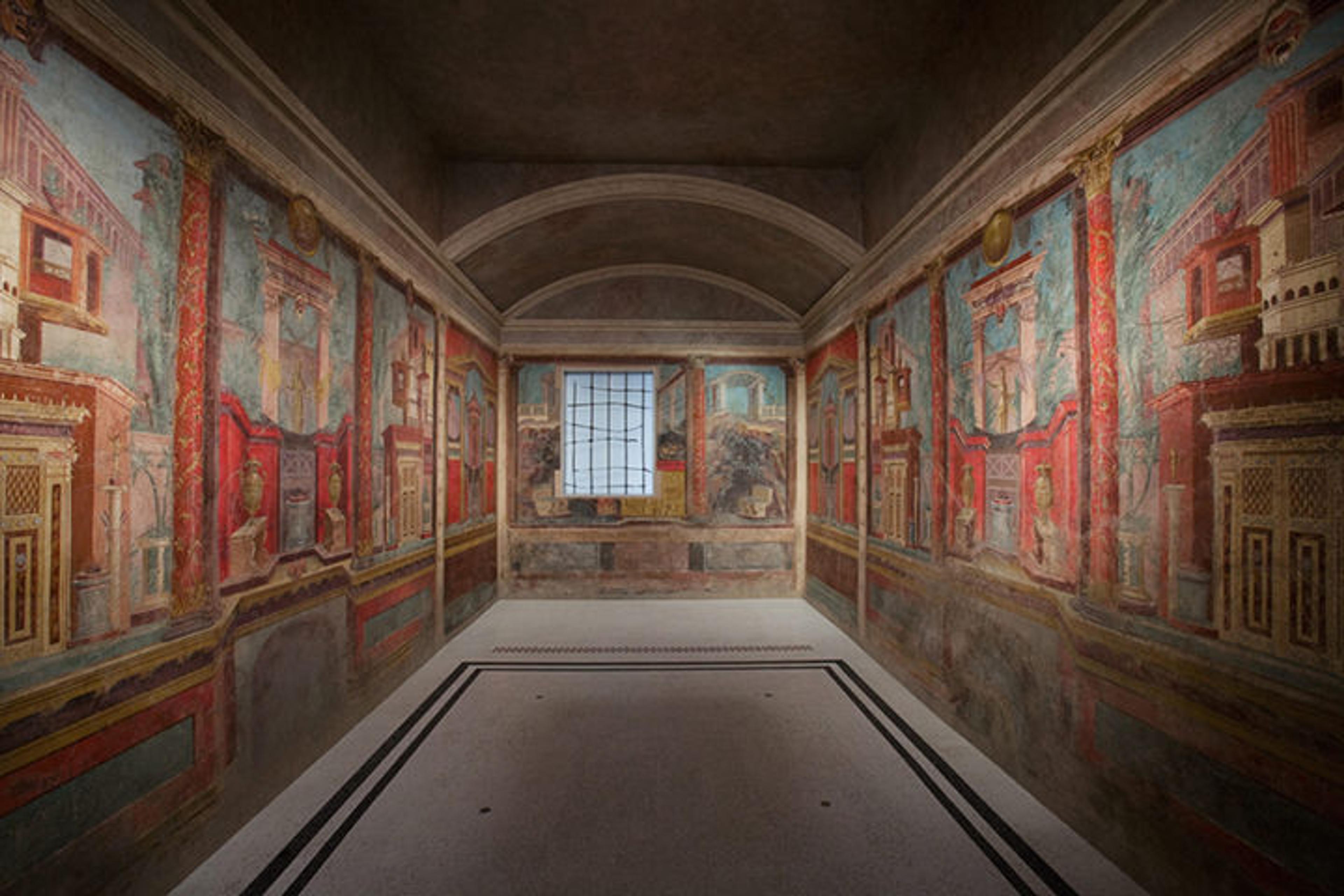
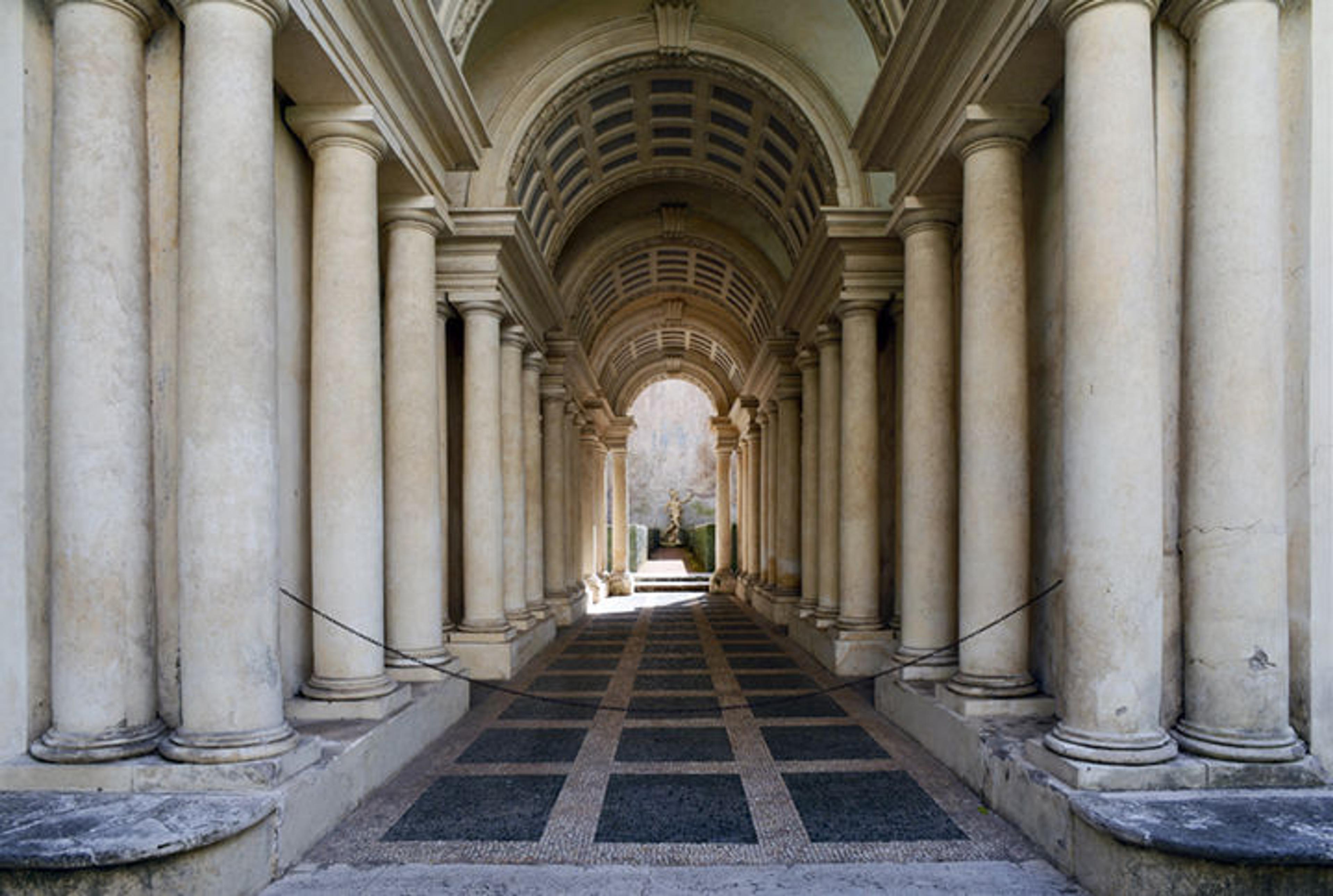

Top left: Cubiculum (bedroom) from the Villa of P. Fannius Synistor at Boscoreale (detail), ca. 50–40 B.C. Roman, Late Republic. Fresco, 8 ft. 8 1/2 in. x 10 ft. 11 1/2 in. x 19 ft. 7 1/8 in. (265.4 x 334 x 583.9 cm). The Metropolitan Museum of Art, New York, Purchase, Rogers Fund, 1903 (03.14.13a–g). Top right: Forced-perspective gallery of Francesco Borromini's Palazzo Spada in Rome. Public-domain image via Wikimedia Commons. Bottom left: Designed by Francesco di Giorgio Martini (Italian, 1439–1501). Studiolo from the Ducal Palace in Gubbio (detail), ca. 1478–82. Italian, Gubbio. Executed under the supervision of Francesco di Giorgio Martini (Italian, 1439–1501); executed in the workshop of Giuliano da Maiano (Italian, 1432–1490); and Benedetto da Maiano (Italian, 1442–1497). Walnut, beech, rosewood, oak, and fruitwoods in walnut base, 15 ft. 10 1/16 in. x 16 ft. 11 15/16 in. x 12 ft. 7 3/16 in. (485 x 518 x 384 cm). The Metropolitan Museum of Art, New York, Purchase, Rogers Fund, 1939 (39.153)
As the exhibition's design team, we wanted to evoke this same sense of grandeur in the spaces and graphic identity of the exhibition Visitors to Versailles (1682–1789), but didn't quite have the budget to build vast expanses of inlaid marble in the Museum. Trompe l'oeil techniques provided one way to evoke the defining architectural qualities of the palace's interiors, which was both efficient and art historically accurate.
Throughout the planning of the exhibition, we worked closely with the Digital Department's audio team to create an engaging spatial narrative. In particular, we were interested in the way that our visual illusions could work in harmony with the aural illusions of the 3-D audio experience, which "mimics the dimensionality and immediacy" of real-world sound in an aural equivalent to trompe l'oeil. Our shared goals were to bring the essence of Versailles to The Met and to make visitors feel as though they have been transported from Fifth Avenue to the royal château.

To do this, we departed from the traditional period-room approach of exhibition design, setting out instead to interpret specific rooms in the palace by drawing from their characteristic architectural elements. Marble inlays, wall niches, engaged columns, gilded woodwork, damasks, and mirrors are carefully orchestrated to give each room its particular character. These distinct motifs help convey the curatorial themes of each gallery and the objects displayed within them.

We categorized the robust range of architectural finishes in the palace into three main groups: marbles, wood paneling, and fabrics. All of these materials offer distinct sensorial qualities—they feel, sound, smell, and look different.
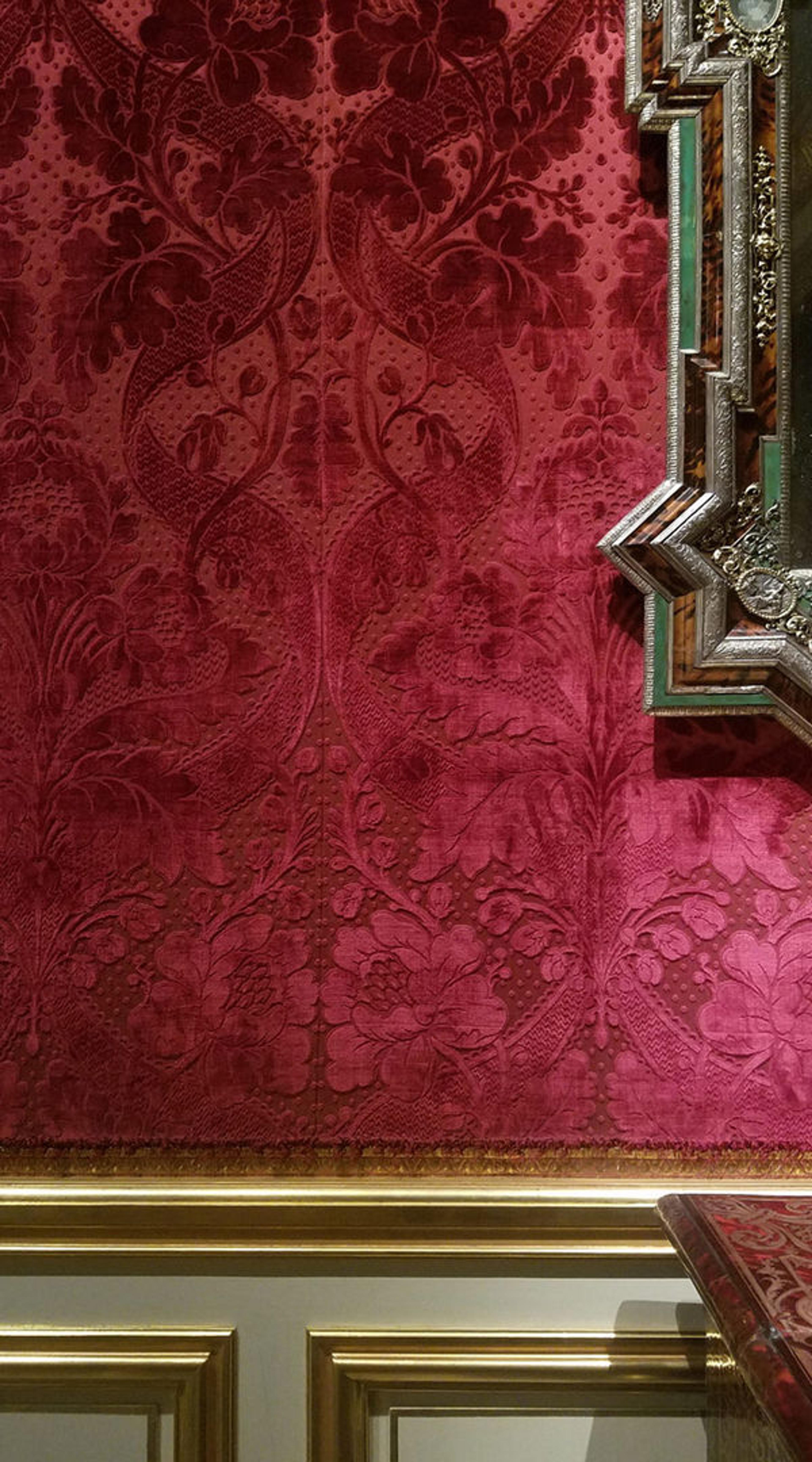
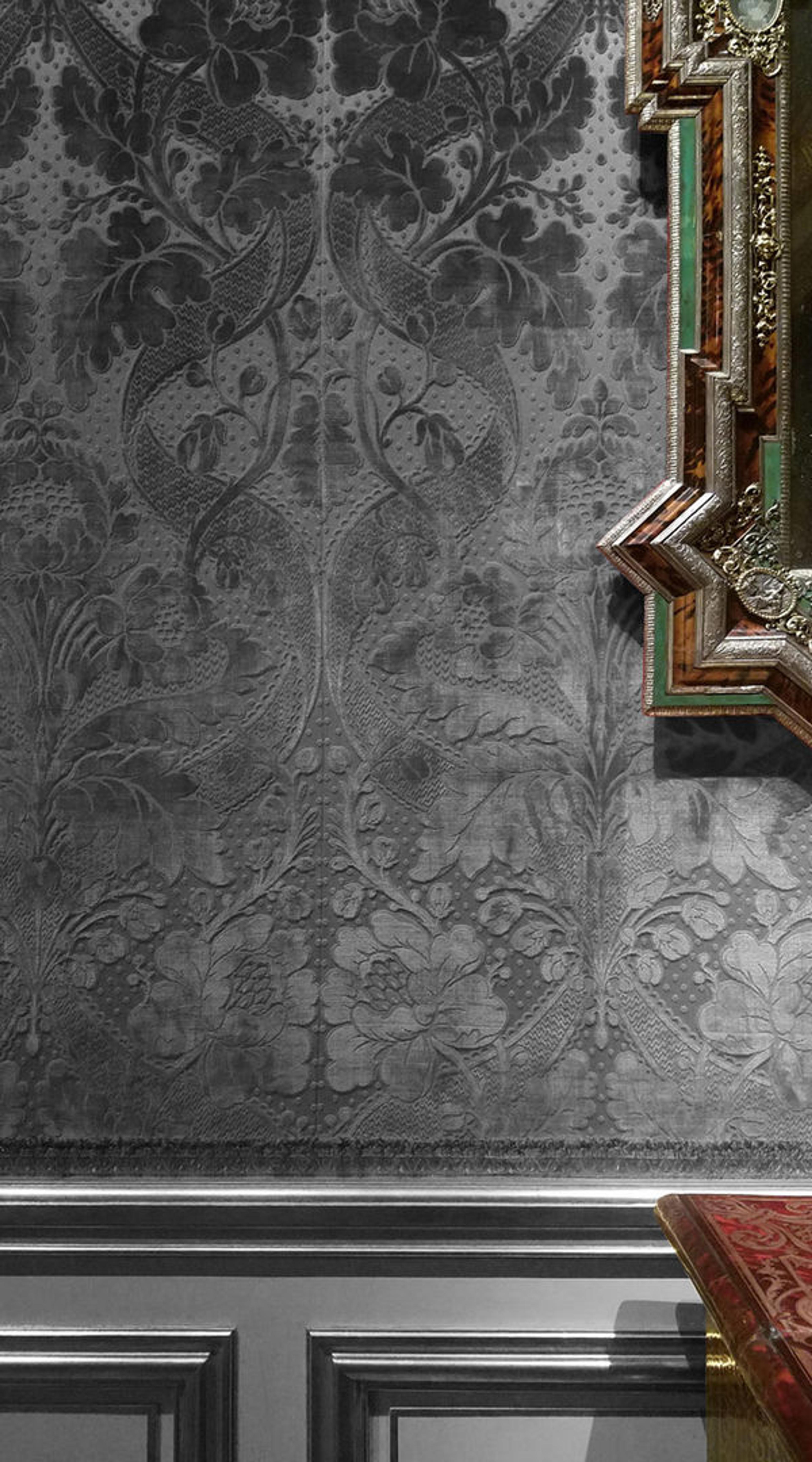
As a way to abstract these materials for our purposes, we focused only on their reflective properties, taking away their color and representing them graphically based on their sheen. By focusing on the sheen, we were able to convey the sense of splendor that the palace is known for, while providing an elegant yet subtle backdrop for the often-colorful and nearly always ornate artwork.

Robert Polidori (Canadian, born 1951). Cabinet Interieur de Mme Adelaide #2 (56C) CCE.01.058, Corps Central—RdC, Versailles, 1986. Fujicolor crystal archive print mounted to dibond. Image courtesy Paul Kasmin Gallery (PK 25099). © Robert Polidori

Hiroshi Sugimoto (Japanese, born 1948). Avalon Theatre, Catalina Island, 1993. Gelatin silver print, 16 5/8 x 21 5/16 in. (42.2 x 54.1 cm). The Metropolitan Museum of Art, New York, Purchase, The Horace W. Goldsmith Foundation Gift, through Joyce and Robert Menschel, 1996 (1996.105.1). © Hiroshi Sugimoto
There were several references that became important inspiration for us in this process of graphically representing architectural interiors. The contemporary photographer Robert Polidori, who documented the interiors of the palace during several years of renovations, captured the château's rooms as ghostly versions of themselves, with elaborate ornaments temporarily deprived of their gilded shine. In looking at Hiroshi Sugimoto's luminously dark photographs of theater halls, we found a visual language that echoed our intent to create an ambience as opposed to an exact recreation.
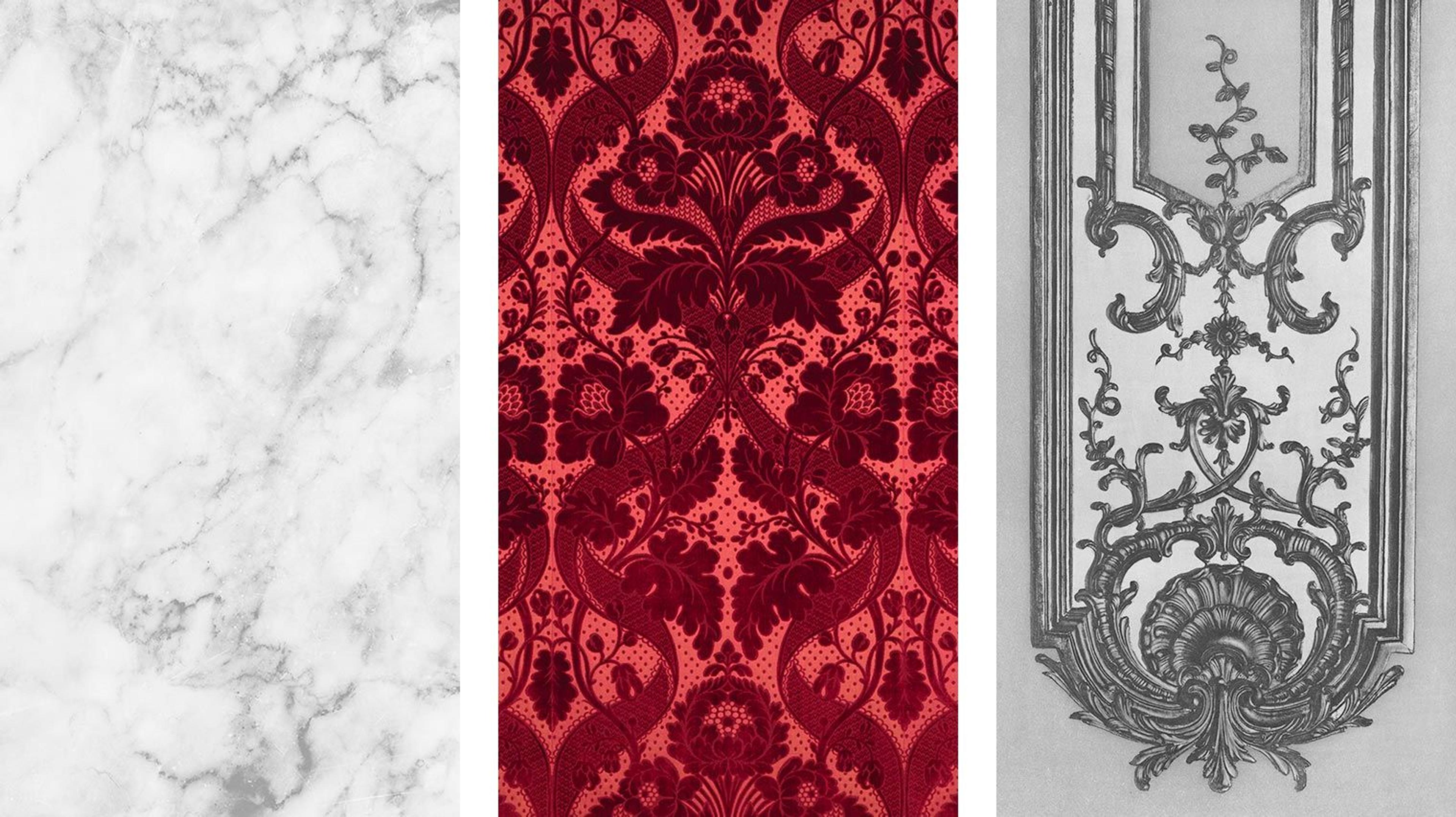
Having established general themes for the design of the wallpaper, we were faced with the challenge of realizing each space in the galleries. Each room was drawn and then rendered in Photoshop with a range of digitized source materials. We sourced marble texture from a stock photograph, the damask patterned wallcovering from a photograph of the Museum's own Wrightsman galleries, and the gilded woodwork imagery from a set of heliographs made by Edouard Baldus at Versailles in the nineteenth century (a portfolio of which we borrowed from The Met's Watson Library).
Our design team (Patrick Herron, Frank Mondragon, and Tal Pritzker) worked closely with the curators to ensure that these elements—while meant to be an evocation of a palace's feeling rather than recreation of a place—were historically appropriate. We then manipulated and collaged our ingredients to create 350 linear feet of wallpaper, measured to the dimensions of the galleries.

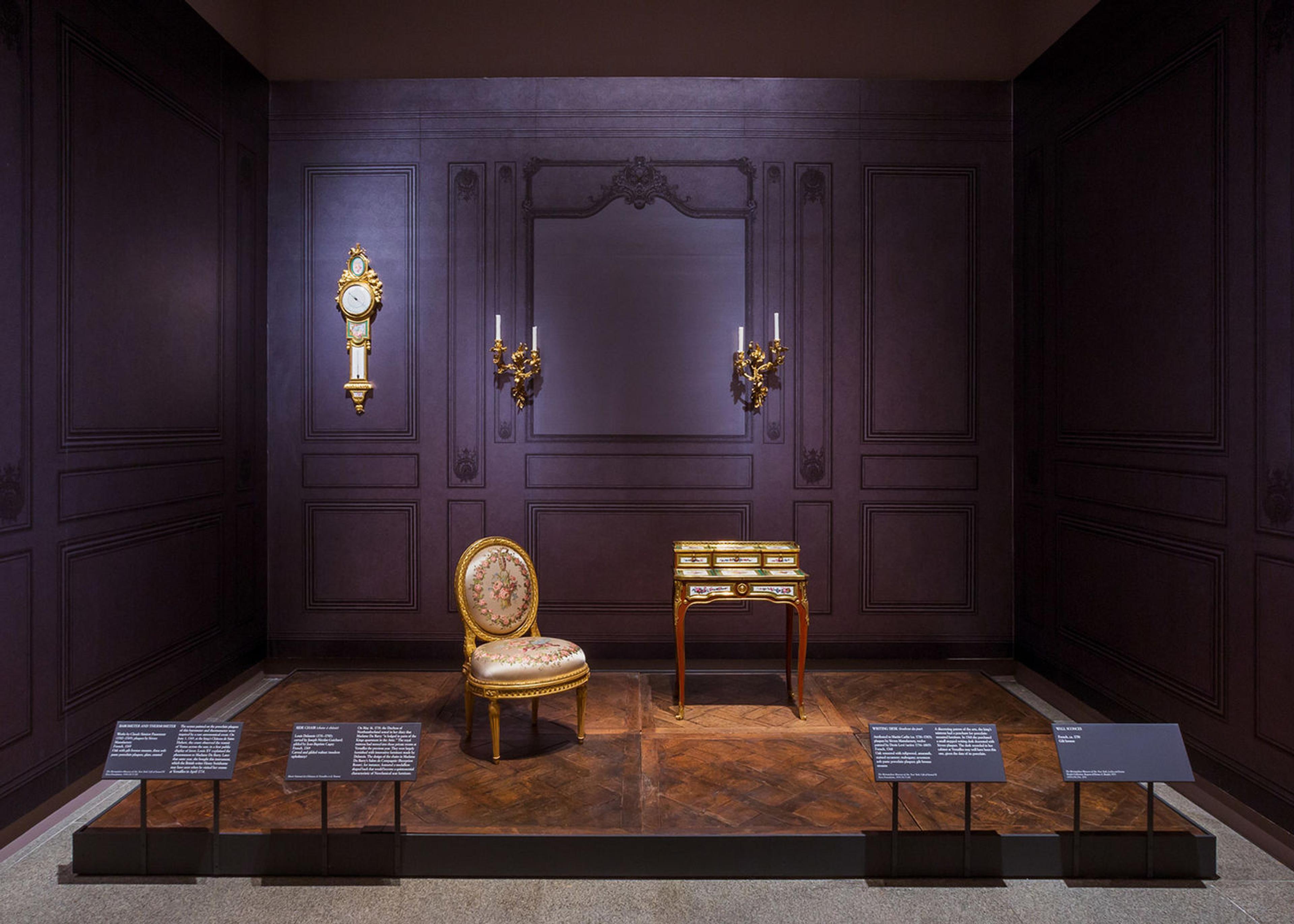


As visitors walk through the galleries, the visual impact of the enfilade creates a sense of depth and anticipation befitting the exhibition's narrative and the multiplicity of stories being told. The individual characteristics of each room convey their distinct purposes and thus color the reading of the objects within them. While we had the space to evoke only a small fraction of the 2,300 rooms at Versailles, we aspired, through design, to transport visitors to this awe-inspiring and meticulously constructed destination.
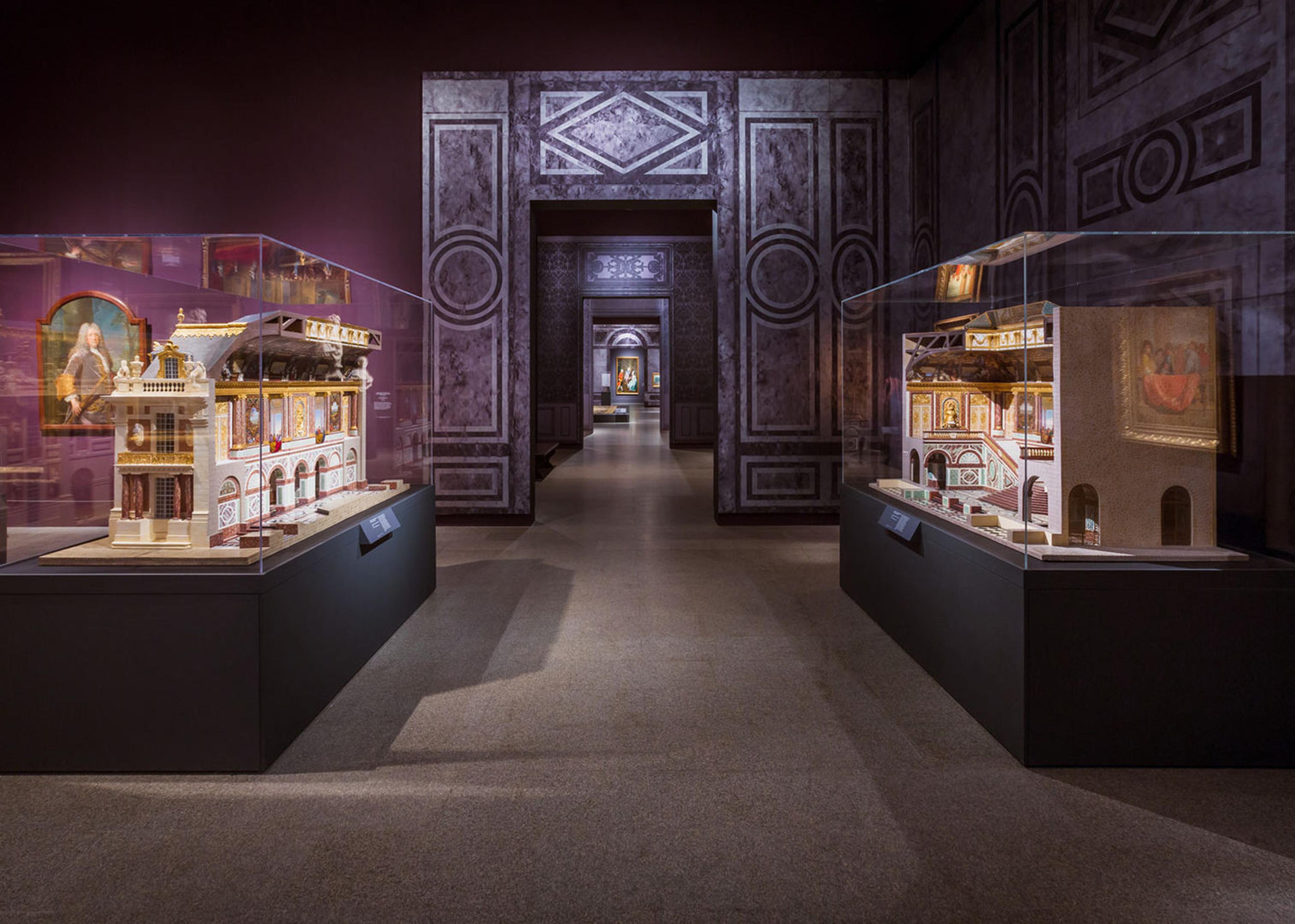
Related Content
Visitors to Versailles (1682–1789) is on view at The Met Fifth Avenue through July 29, 2018.
Learn more about the binaural audio experience and view the exhibition galleries.
Read a blog series about Visitors to Versailles on Now at The Met.
The exhibition catalogue is available for purchase at The Met Store.
Ria Roberts
Ria Roberts is a graphic designer in the Design Department.
Alejandro Stein
Alejandro Stein is an exhibition designer in the Design Department.